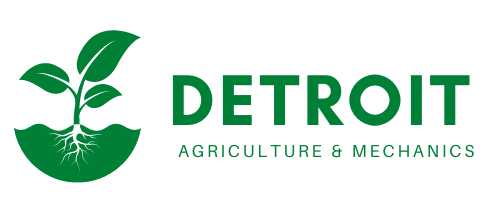Financial Projections:
Detroit A&M’s financial projections for the next 3-5 years indicate a steady growth trajectory and a strong financial position. The following is a breakdown of the revenue streams, anticipated costs, and financial forecasts:
Revenue Streams:
- Tuition Fees: The primary revenue source for Detroit A&M is tuition fees from enrolled students. These fees will vary based on the programs and courses selected by students.
- Micro-Green Sales: The agricultural farm at Detroit A&M will generate revenue through the sale of micro-greens to local restaurants, grocery stores, and individual customers. The revenue from micro-green sales will increase as production capacity and market demand grow.
- Grants and Sponsorships: Detroit A&M will actively pursue grants and sponsorships from government entities, foundations, and corporate partners to support its educational initiatives, research projects, and community outreach programs.
Anticipated Costs:
- Staffing: Salaries and benefits for faculty members, administrative staff, and farm workers are accounted for in the operational costs. The number of staff members will increase as student enrollment and farm production expand.
- Facilities and Equipment: Costs related to the maintenance, lease, or purchase of academic buildings, farm facilities, classrooms, laboratories, and specialized equipment are factored into the financial projections.
- Marketing and Promotion: Expenditures for marketing and promotion activities, such as advertising campaigns, digital marketing, and participation in industry events, are considered to increase awareness, attract students, and promote micro-green sales.
Financial Forecasts: Based on comprehensive market research and projected growth, the financial forecasts for Detroit A&M are as follows:
- Revenue Growth: The revenue from tuition fees is expected to increase steadily as student enrollment rises over the forecasted period. Revenue from micro-green sales will also grow as market penetration and demand increase.
- Cost Management: Detroit A&M will implement cost control measures to ensure operational efficiency and effective resource allocation. This includes optimizing staffing levels, negotiating favorable contracts for facilities and equipment, and implementing energy-saving initiatives.
- Profitability: With a balanced revenue mix from tuition fees and micro-green sales, Detroit A&M aims to achieve profitability within the forecasted period. The growth in student enrollment and micro-green sales will contribute to the overall financial sustainability of the institution.
- Return on Investment: As Detroit A&M attracts more students and expands its micro-green production, the return on investment for investors will increase. The financial projections demonstrate a positive outlook for potential investors seeking a profitable and socially impactful venture.
It is important to note that the financial projections are based on reasonable assumptions and market trends. However, actual financial performance may be influenced by factors such as economic conditions, competition, and regulatory changes.
Detroit A&M’s robust revenue streams, diligent cost management, and strategic financial planning ensure the institution’s long-term financial stability and growth potential.
